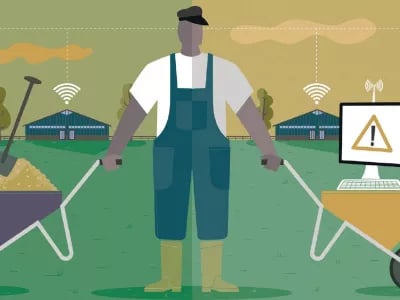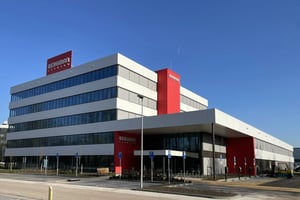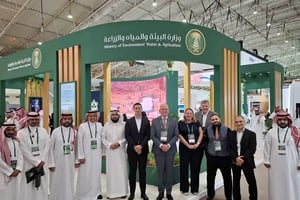From reversible ploughs to combine harvesters and from fertiliser injector systems to drones: the development of modern agriculture has long been technology driven. Technology is also playing an increasingly prominent role in cattle farming. The editorial staff of Capital Magazine talked to Dries Berckmans, CEO of Belgian-based start-up SoundTalks, and Erik Vranken, Research Manager at cattle IT company Fancom, They believe that Precision Livestock Farming (PLF) can help to improve animal welfare – and to create new business models in cattle farming in the process.
Could you explain what PLF involves exactly?
Berckmans: ‘PLF is the name given to a number of technologies which are used in, on and around animals in the agricultural industry, for the purpose of permanently tracking the animal’s condition. This might involve tagging larger animals, or attaching tags to cameras and microphones that can monitor large groups of smaller animals. But you could also include less sophisticated applications, like devices that measure the absorption of water or feed.’
Vranken: ‘PLF is not new in itself, but until recently it was mostly a scientific field. But now we’re seeing the rapid emergence of functional systems in the market which are designed specifically to improve animal health and welfare.’
How should we imagine these types of systems at a practical level?
Vranken: ‘Whereas with larger animals such as cows you can use sensors on or inside the animal, that becomes more complicated when you’re dealing with smaller animals such as pigs and chickens. That’s why we’re investing in contactless measuring techniques, with the use of cameras and microphones. Essentially we follow the animals as a group 24/7 and minute by minute.
Suppose you’ve got a pig barn that’s divided into different areas: there’s a feeding area, a drinking area and a resting area. By linking cameras to software monitors, we can measure both the utilisation rate of the various functional areas and the activity levels of the animals in the group.
If you do this systematically, you will start to identify certain patterns, and if those patterns diverge from expectations, you can develop an early-warning system in response. The software records, for example, that a specific pig or a passel of pigs hasn’t moved for some time. That tells you right there that something’s not right, as reduced activity is often an indicator of illness, same as when an animal starts drinking less water or stops eating altogether. We are the first to pick up on those signs, long before the farmer catches wind of it. We usually notice it one or two days earlier, which makes it easier for the farmer to intervene and take the appropriate measures.’
Berckmans: ‘I would like to make clear that our technology is not designed to replace farmers; its purpose is to distribute the available time more efficiently. Currently, farmers make the rounds of the barn every day, spending a certain amount of time checking each pig. By using PLF applications, a farmer knows before starting his round that something’s wrong in a specific location in the barn or that there’s a potential risk of something happening, and he can decide he wants to check it out.’













